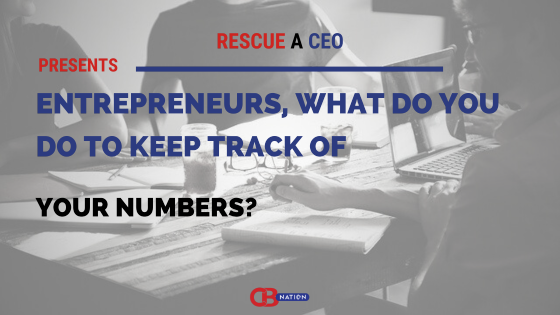When it comes to determining the right price for your products, several factors should be considered. You will want to eliminate costs that result in setting the price too low while maximising your profit on sales for the products or services you offer. The right price is hence the most important decision you will have to make as a business owner.
We asked entrepreneurs and business owners on what they consider to be the right price.
#1- Two determining factors

Coming up with the right price that is fair between me and my client is not something that I will suddenly just decide on my own. As for me who is owning and managing an online marketing firm which provides SEO services, website developing, etc.. the price of my product depends on the following factors: (1) Attainability and difficulty of client's order. (2) Urgency of the order.
Thanks to Brad M. Shaw, Dallas Web Design Inc!
[divider]
#2- Market research and perception of higher quality

Our decision for the price point of our unique Ties was backed by market research and our desire to position our product as mid-value in the market. Our closest competitor was priced $2 less than our final price decision. We wanted our product to be perceived as higher quality than our competitor. At the end of the day, it's all about finding your sweet spot in the market.
Thanks to Devin Stagg, Cambo Ties!
[divider]
#3- Intensive research and experience

As a public relations consultant, I'm competing against other independent service providers as well as agencies. My rates are a combination of pretty intensive research of professional organizations who do studies on PR practitioner careers and what I learned from working in an agency in terms of staff pay and client contract amounts. That said, no amount of research can replace real world experience of seeing what clients will actually pay. It's a good idea to ask prospects who choose to go elsewhere if price made a difference in their decision.
Thanks to Dave Menzies, Innovative Public Relations!
[divider]
#4- Flexibility with the fees I charge

My struggle as a startup public relations company in a small market is that I can't charge clients what I would charge businesses in a larger city. Not even close. I've become cognizant that if I want to continue to help small businesses with my services, I have to be flexible with my fee. Because each of their needs/wants differ from one another, it can't be a one size fits all when it comes to the price. However, I also am a firm believer in you get what you pay for, so if a client has a shoestring budget for PR services, I can only do so much with the limited time/money I'm given. In other words, I'd be stretching myself thin and wouldn't be as effective in my efforts to execute a successful PR campaign.
Thanks to Melissa Toledo, Bon Vivant PR!
[divider]
#5- Considered from several factors

The media spa field in San Diego is very competitive. Before opening our doors, we did extensive competitor research and decided to go with a Competitor-Based Pricing model. We were not looking to undercut the competition but wanted to ensure we were competitive as a new business. We avoided price wars but stayed aware of the competitive landscape. Over time, we have moved to a premium based pricing model as our reputation has grown and we are now #1 rated provider on Yelp in San Diego with a loyal clientele. We examine our prices quarterly and make adjustments as necessary. I do not feel any single approach is best; we factor considerations in pricing our services.
Thanks to Dr. Alex Roher M.D, San Diego Medical Spa!
[divider]
#6- Analysing costs and competitors' price

We decided on our pricing after analyzing costs and how much our competitors were charging. Our goal was to position our brand and products as the premium option on the market. By manufacturing products of higher quality, even though we charge more than the competition, equates to a higher value for the customer and actually less cost per square foot, in both initial installation and ongoing maintenance. The higher price indicates our premium quality, and doing comparative math indicates our value. In addition, we also offer our products in bundles. This provides our customers with a simple ordering process that saves money by buying in bulk. By purchasing one of our kits, they further reduce the cost per unit they pay.
Thanks to Earl Choate, Concrete Camouflage!
[divider]
#7- Per-user pricing

Pricing software can be tricky. On the one hand, you want to maximize the amount of users you have. On the other hand, you also want to avoid leaving money on the table. We decided to price our SaaS platform with per-user pricing. Each of our pricing options is based on monthly subscriptions per user. This allows us to capture a large portion of our market by making our pricing customizable to the size of an organization. Larger companies with more employees and individuals using our software pay more overall than smaller businesses, but the cost per user remains consistent. In addition, we also offer pricing tiers. Each tier comes with different functionalities and customer support. Ultimately, the goal of our pricing strategy is to increase the lifetime value of each of our customers by providing flexible options.
Thanks to Yves Frinault, Fieldwire!
[divider]
#8- Three Steps

To set the correct price for your product or service, first figure your variable costs, both direct and overhead, per unit of product or service that you sell. Next allot a portion of your fixed overhead computed at a reasonable volume. If you sell more volume in any given period then you're over absorbing your fixed overhead and should make more profit, and conversely less profit if volume is down. Add a reasonable profit for your industry to establish your sales price, and conduct some market research to ensure you're in line with your competitors. If your cost is too high, something is wrong with your business model compared to your competitors. If you price is too low, you have room to increase profit margin.
Thanks to Bob Herman, IT Tropolis!
[divider]
#9- Price based on competition, feedback from our customers and value of services

Our pricing is mostly based on a comparison of the pricing of our competition, feedback from our customers and value of services. If we were to focus exclusively on any one of these factors, we would have a different outcome, so we combine all of the factors to create a price point for our products that meets all of the relevant inputs. We also have varying levels of service, which can enable customers to select certain price levels based on their needs and requirements rather than a one-size-fits-all approach. We understand that some may want to do more themselves and others may want to have a higher level of service, so those are areas where the client can elect varying service levels.
Thanks to Deborah Sweeney, MyCorporation!
[divider]
#10- Based overall value

As a service/consulting business, we base our pricing not on our competition or exact deliverables, but on the overall value we feel we bring to a client's business.
Thanks to Fabian Geyrhalter, FINIEN!
[divider]
#11- Evaluated fully from the market

Pricing a product is difficult as an entrepreneur. You want to make sure price your product correctly so you obtain sales however you never want to be the lowest price in the market. The best way to price your product is to evaluate the market fully. Who else is in your market? How much are they charging? What are you offering that is different or more specialized than others? Do you have more experience? Is there a way for you to prove that your product is better? If so you can demand a higher price point in your competitors. Psychology and sales data suggests that your price should end in a seven or nine to increase sales conversions. But the most important issue is determining what the market will actually bear.
Thanks to Jennifer Miles-Thomas
[divider]
#12- Low Price

When setting the initial price for the VuVa Dilators we had to factor in the price of the neodymium magnets, a key part of the device. Neodymium magnet can be pricey, so we had to take that into account plus the labor that it takes to create the product. When setting the price, men wanted to make it much higher, but I had to tell them that the women who needed the medical device had many medical issues besides pelvic pain and that we need to keep it low so they could afford it with their co-pays and medications. Since we started-up, we have grown so quickly we have received a price break from the manufacture so we were able to then lower the price even more. Anything that I can do to help these women afford dilators I will do.
Thanks to Tara Langdale-Schmidt, VuVatech!
[divider]


















































 |
|